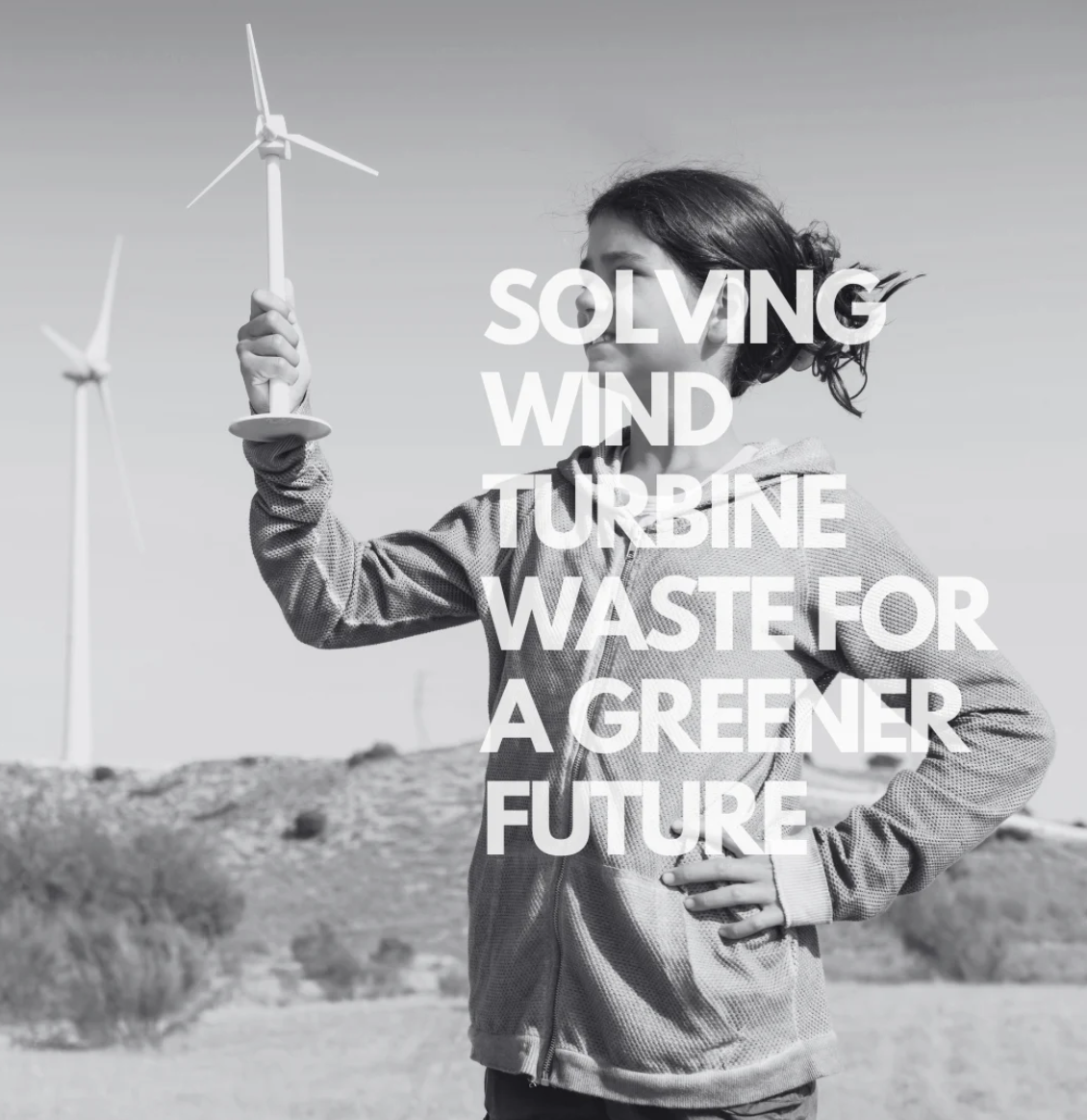
Green revolution: How recycling wind turbine blades is transforming the wind turbine industry
The project
FibeCycle, working together with Nergica, has recently undertaken a detailed study on the carbon footprint of wind turbine blades throughout their life cycle. The partnership highlights the positive impact of recycling composite materials used in wind turbines, offering an innovative solution for reducing waste and promoting a sustainable future.
FibeCycle shows that wind turbine blades can actually be transformed into new environmental resources. “At FibeCycle, we often say we are changing the way people see wind turbine waste. Blades used to be considered non-recyclable waste. Now, by recycling blades, we are not just changing the way people talk: we are demonstrating that blades can actually be recycled,” says Cesar Patricio, cofounder and CEO of FibeCycle. “Our exclusive and innovative recycling process is geared to adjust to demand, while efficiently transforming large volumes of discarded wind turbine blades,” he adds. The recycling process developed by FibeCycle involves the careful sorting of wind turbine blades followed by a sophisticated procedure transforming them into high-quality recycled fibreglass. These fibres are then used to create fibre-reinforced polymers (ecoFRPs[1]), making it possible to manufacture sustainable products while reducing dependence on virgin materials.
Photos of the FibeCycle process: From discarded blades to the manufacture of eco-friendly materials.
Meeting the challenge
Taking Canada as a whole, the numbers are striking: over the next 14 years, Canada will have to decommission about 9,000 wind turbines, generating more than 20,000 tonnes of blade waste. Without FibeCycle’s efficient recycling solution, this significant amount of waste would have a devastating environmental impact. FiceCycle’s technology thus offers a concrete alternative by promoting the circular economy and lowering the carbon footprint of the wind turbine industry. Given the rising number of Canadian wind turbines reaching the end of their life cycle, the challenge of eliminating the blades is vitally important.
FibeCycle undertook a comparative study[2] which examines the three options available for managing blade waste – landfill sites, incineration and recycling:
The solutions
The study concludes that each 1.5 MW wind turbine typically generates a significant energy footprint throughout its life cycle, equivalent to 646 gigajoules (GJ) of energy and 35 tonnes of CO2 equivalent. FibeCycle aims to transform this challenge into an opportunity by offering a viable recycling solution, lowering carbon emissions, and promoting environmental sustainability.
Key facts
- FibeCycle and Nergica have identified the significant carbon footprint of wind turbines, highlighting the need for recycling solutions.
- FibeCycle’s process transforms wind turbine blades into high-quality recycled fibreglass, creating fibre-reinforced polymers (ecoFRPs).
- Over the next 14 years, Canada will need to decommission around 9,000 wind turbines, generating more than 20,000 tonnes of blade waste. Without recycling solutions, this waste would have a devastating environmental impact.
- FibeCycle’s approach reduces dependence on virgin materials, contributing to the circular economy in the renewable energy sector.
- The recycling of wind turbine blades supports the commitment to green energy and the reduction of CO2 emissions, responding to a major environmental concern.
[1] EcoFRPs are sustainable composite materials derived from recycled fibres and resins.
[2] Data from FibeCycle’s comparative study Cradle to Gate.
About us
FibeCycle
FibeCycle was founded to help address the issue of wind turbine blade end-of-life. The company’s solution provides a sustainable alternative that effectively manages the disposal of wind turbine blades, which are typically made of fibreglass and other materials. Instead of ending up in landfills or being incinerated, FibeCycle recycles these blades to create ecoFRPs (fibre-reinforced polymers) that are building blocks for creating sustainable products. The company’s approach focuses on recycling, reducing, and reusing wind turbine blade waste, fostering a sustainable circular economy.
Hightlights
- FibeCycle and Nergica have identified the significant carbon footprint of wind turbines, highlighting the need for recycling solutions.
- FibeCycle’s process transforms wind turbine blades into high-quality recycled fibreglass, creating fibre-reinforced polymers (ecoFRPs).
- FibeCycle’s approach reduces dependence on virgin materials, contributing to the circular economy in the renewable energy sector.
- Over the next 14 years, Canada will need to decommission around 9,000 wind turbines, generating more than 20,000 tonnes of blade waste. Without recycling solutions, this waste would have a devastating environmental impact.
- The recycling of wind turbine blades supports the commitment to green energy and the reduction of CO2 emissions, responding to a major environmental concern.
